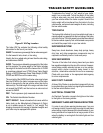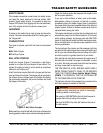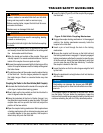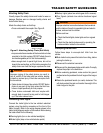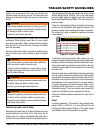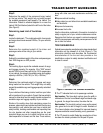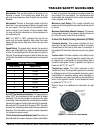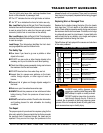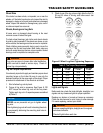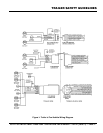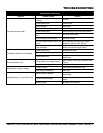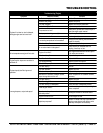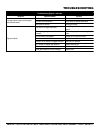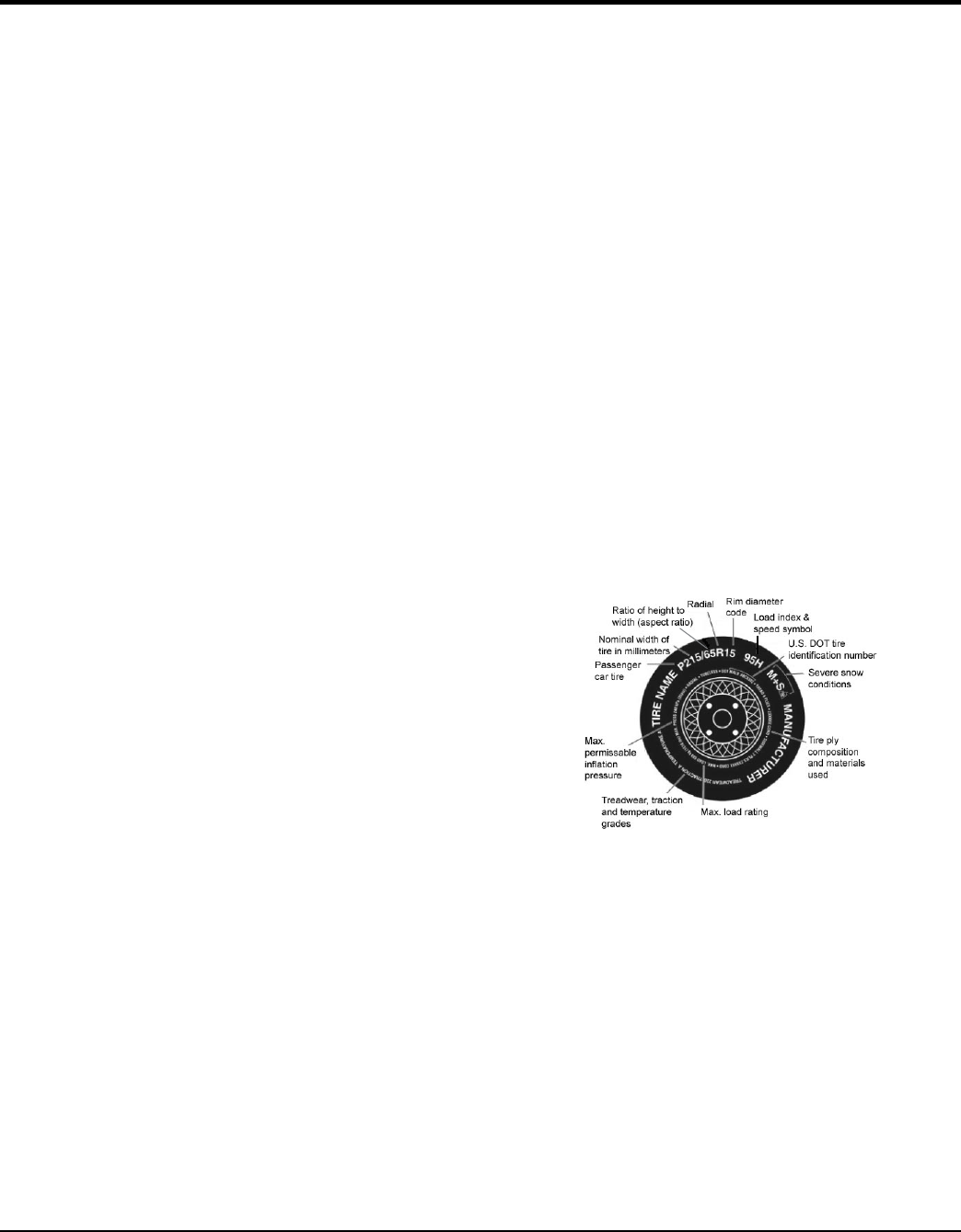
QP4TZT10P/TMP16F/TMPXF TRASH PUMP • OPERATION & PARTS MANUAL — REV. #1 (08/29/11) — PAGE 37
Step 2.
Determine the weight of the equipment being loaded
on the tow vehicle. That weight may not safely exceed
the available equipment load capacity. The trailer’s Tire
Information Placard is attached adjacent to or near the
trailer’s VIN (Certifi cation) label at the left front of the trailer
(See Figure I).
Determining Load Limit of Tow Vehicle
Step 1.
Locate the statement, “The combined weight of occupants
and cargo should never exceed XXX lbs.,” on your vehicle’s
placard.
Step 2.
Determine the combined weight of the driver and
passengers who will be riding in your vehicle.
Step 3.
Subtract the combined weight of the driver and passengers
from XXX kilograms or XXX pounds.
Step 4.
The resulting fi gure equals the available amount of cargo
and luggage capacity. For example, if the “XXX” amount
equals 1400 lbs. and there will be fi ve 150 lb. passengers
in your vehicle, the amount of available cargo and luggage
capacity is 650 lbs. (1400-750 (5 x 150) = 650 lbs.).
Step 5.
Determine the combined weight of luggage and cargo
being loaded on the vehicle. That weight may not safely
exceed the available cargo and luggage capacity calculated
in Step 4.
If your vehicle will be towing a trailer, load from your trailer
will be transferred to your vehicle. Consult the tow vehicle’s
manual to determine how this weight transfer reduces the
available cargo and luggage capacity of your vehicle.
Studies of tire safety show that maintaining proper tire
pressure, observing tire and vehicle load limits (not carrying
more weight in your vehicle than your tires or vehicle can
safely handle), avoiding road hazards and inspecting tires
for cuts, slashes and other irregularities are the most
important things you can do to avoid tire failure, such as
tread separation or blowout and fl at tires. These actions,
along with other care and maintenance activities, can
also:
Improve vehicle handling.
Help protect you and others from avoidable breakdowns
and accidents.
Improve fuel economy.
Increase the tire life.
Use the information contained in this section to make tire
safety a regular part of your vehicle maintenance routine.
Recognize that the time you spend is minimal compared
with the inconvenience and safety consequences of a fl at
tire or other tire failure.
TIRE FUNDAMENTALS
Federal law requires tire manufacturers to place standardized
information on the sidewall of all tires (Figure I). This
information identifies and describes the fundamental
characteristics of the tire and also provides a tire
identifi cation number for safety standard certifi cation and
in case of a recall.
Figure I. Standard Tire Sidewall Information
P: The “P” indicates the tire is for passenger vehicles.
Next number: This three-digit number gives the width in
millimeters of the tire from sidewall edge to sidewall edge.
In general, the larger the number, the wider the tire.
Next number
: This two-digit number, known as the aspect
ratio, gives the tire’s ratio of height to width. Numbers of
70 or lower indicate a short sidewall for improved steering
response and better overall handling on dry pavement.
P
: The “R” stands for radial. Radial ply construction of tires
has been the industry standard for the past 20 years.
TRAILER SAFETY GUIDELINES




